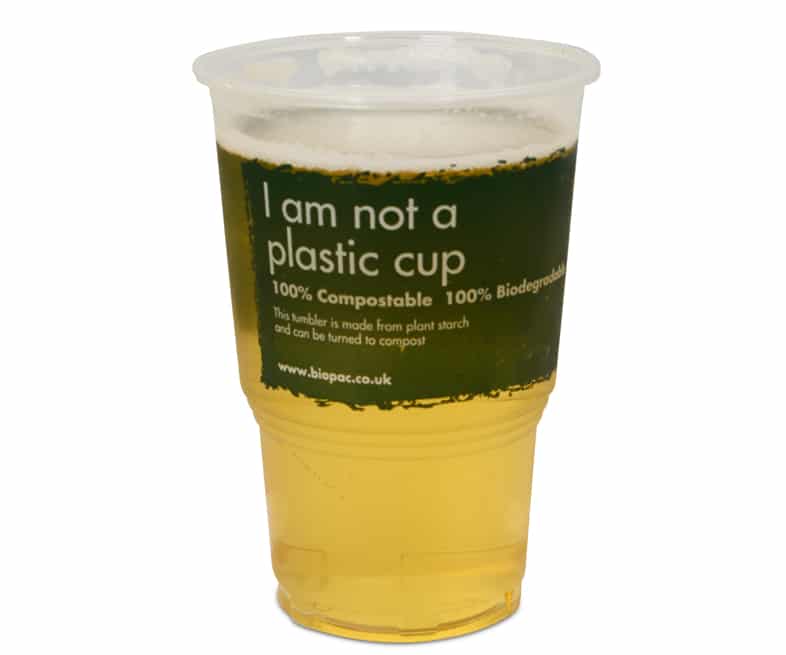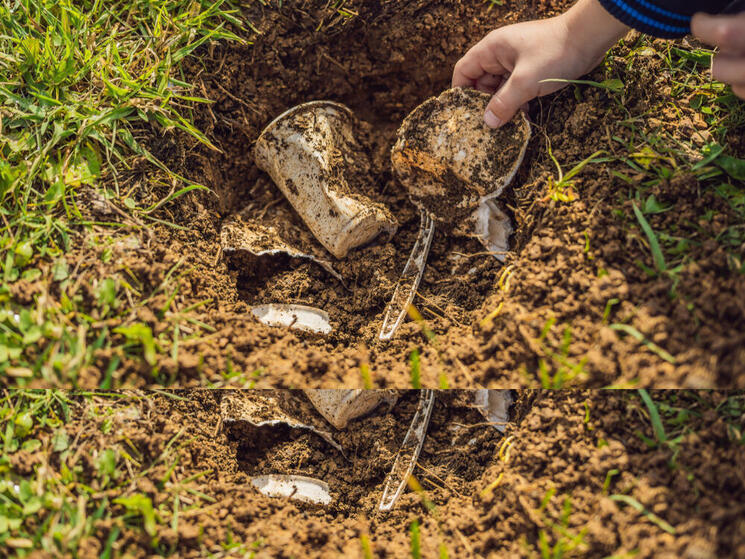Biodegradable plastic is a type of plastic that can be broken down by microorganisms into natural substances such as water, carbon dioxide, and biomass. Unlike traditional plastic which takes hundreds of years to decompose, biodegradable plastic can decompose in a much shorter time frame, usually ranging from a few months to a few years.
There are different types of biodegradable plastics, such as:
- Bioplastics: These are made from renewable resources such as cornstarch, sugarcane, and potato starch. They can be composted in industrial composting facilities and break down within a few months.
- Oxo-biodegradable plastics: These are conventional plastics that have been treated with additives that accelerate the degradation process. They break down into smaller fragments that can be consumed by microorganisms.
- Photodegradable plastics: These plastics break down when exposed to sunlight and oxygen, but they do not fully decompose into natural substances.
Biodegradable plastics have a lower environmental impact than traditional plastics because they do not accumulate in landfills or oceans. However, it is important to note that they still have some environmental drawbacks, such as requiring energy and resources to produce and potentially emitting greenhouse gases during decomposition. It is important to properly dispose of biodegradable plastics by composting them in an industrial facility or disposing of them in a way that minimizes their impact on the environment.
What is biodegradable plastic
Biodegradable plastic is a type of plastic that is capable of breaking down into natural substances such as water, carbon dioxide, and biomass through the action of microorganisms. Unlike traditional plastics that can take hundreds of years to decompose, biodegradable plastics can decompose much more quickly, typically within a few months to a few years.
There are various types of biodegradable plastics, including those made from plant-based materials, such as corn starch, sugarcane, and potato starch, as well as those made from conventional plastic materials that have been treated with additives to facilitate their degradation.

Biodegradable plastics offer several potential environmental benefits, such as reducing the amount of plastic waste that accumulates in landfills and oceans. However, it is important to note that biodegradable plastics still have some drawbacks, including the energy and resources required to produce them, potential greenhouse gas emissions during their decomposition, and the need for proper disposal methods that ensure they do not harm the environment.
- Top 10 Ways to Reduce Your Carbon Footprint Today
- Is biodegradable and compostable plastic good for the environment its effects
- Complete Guide to Tree Trimming: Types, Tools, and Techniques – Pruning vs Cutting vs Lopping
- Landslide: Know about Types, Definition, Facts and Causes
- Earthquake Seismology
Why biodegradable plastic is an important matter
Biodegradable plastic is an important matter because traditional plastic has significant negative impacts on the environment. Traditional plastics take hundreds of years to decompose and can persist in the environment for centuries, contributing to the problem of plastic pollution. Plastic waste also harms wildlife, damages ecosystems, and can have negative impacts on human health.

Biodegradable plastics offer a potential solution to these problems by breaking down much more quickly than traditional plastics, reducing the amount of plastic waste that accumulates in the environment. They also have the potential to reduce greenhouse gas emissions associated with traditional plastic production, as well as to reduce the use of non-renewable resources in plastic production.
When biodegradable plastic was first invented
The concept of biodegradable plastics was first introduced in the 1970s. During this time, researchers were exploring ways to develop plastics that could be broken down by microorganisms into natural substances. The first biodegradable plastic was a starch-based plastic developed by researchers at the University of Akron in Ohio in the early 1970s. Since then, numerous advancements have been made in the development of biodegradable plastics, and various types of biodegradable plastics have been developed using different materials and technologies. Today, biodegradable plastics are increasingly being used in a range of applications, from packaging materials to consumer goods, as part of efforts to reduce the environmental impact of plastic waste.
What are the main ingredients of biodegradable plastic
The main ingredients of biodegradable plastic depend on the type of biodegradable plastic being produced. Some of the common ingredients used in the production of biodegradable plastics include:
- Starch-based materials: These are typically made from corn, wheat, or potato starch and are used to create bioplastics that can be composted.
- Cellulose-based materials: These are made from wood pulp or cotton linters and are used to create biodegradable plastics that are strong and durable.
- Biodegradable polymers: These are made from natural materials such as polylactic acid (PLA), which is derived from corn starch, and polyhydroxyalkanoates (PHA), which are produced by microorganisms.
- Synthetic materials: Some biodegradable plastics are made from conventional plastics that have been modified with additives that facilitate their biodegradation.
In general, biodegradable plastics are made from materials that are derived from renewable resources and are designed to break down more quickly than traditional plastics, reducing their impact on the environment. However, it is important to note that not all biodegradable plastics are created equal, and some may have a higher environmental impact than others depending on their production methods and disposal practices.
How biodegradable plastic helps the environment

Biodegradable plastic helps the environment in several ways, including:
- Reducing plastic pollution: Biodegradable plastics break down more quickly than traditional plastics, reducing the amount of plastic waste that accumulates in the environment. This can help to prevent plastic pollution and reduce the harmful effects of plastic waste on wildlife, ecosystems, and human health.
- Conserving resources: Biodegradable plastics are often made from renewable resources such as plant-based materials, which can help to reduce the use of non-renewable resources in plastic production.
- Reducing greenhouse gas emissions: Some biodegradable plastics, such as those made from plant-based materials, have the potential to reduce greenhouse gas emissions associated with traditional plastic production. This is because they are made from renewable resources and can potentially be composted, reducing the need for fossil fuel-based inputs.
- Encouraging sustainable practices: Biodegradable plastics can encourage sustainable practices such as composting, which can help to reduce waste and promote circular economy principles.
However, it is important to note that biodegradable plastics are not a panacea and have some limitations. For example, they may still require significant resources and energy to produce, and they may emit greenhouse gases during their decomposition. Proper disposal methods are also necessary to ensure that biodegradable plastics do not harm the environment. Nonetheless, biodegradable plastic is an important development in efforts to reduce the environmental impact of plastic waste.

